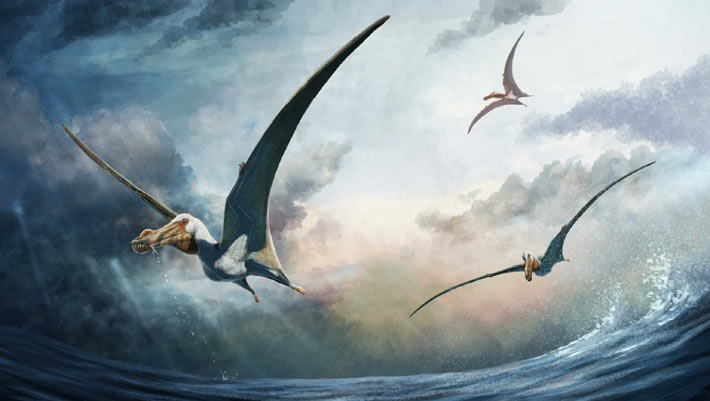[ad_1]
Paleontologists in Australia have discovered fossilized skeletal remains that belonged to a previously unknown, 100-million-year-old anhanguerian pterosaur.
The newly-identified pterosaur species lived in what is now Queensland, northeast Australia, during the Early Cretaceous epoch, some 100 million years ago.
Scientifically named Haliskia peterseni, the flying reptile had a premaxillary crest and curved teeth.
It was also equipped with a large wingspan of approximately 4.6 m (15.1 feet).
“Haliskia peterseni would have been a fearsome predator around 100 million years ago when much of central western Queensland was underwater, covered by a vast inland sea and globally positioned about where Victoria’s southern coastline is today,” said Curtin University Ph.D. student Adele Pentland.
The fossilized remains of Haliskia peterseni were found by Kronosaurus Korner museum curator Kevin Petersen in November 2021 in the Toolebuc Formation of the Eromanga Basin.
“Haliskia peterseni is 22% complete, making it more than twice as complete as the only other known partial pterosaur skeleton found in Australia,” Pentland said.
“The specimen includes complete lower jaws, the tip of the upper jaw, 43 teeth, vertebrae, ribs, bones from both wings and part of a leg.”
“Also present are very thin and delicate throat bones, indicating a muscular tongue, which helped during feeding on fish and cephalopods.”
Pentland and colleagues identified the specimen as a member of Anhangueria, a group of pterosaurs known to have lived across the world, including in what is now Brazil, England, Morocco, China, Spain and the United States.
“The cosmopolitan nature of anhanguerian pterosaurs, particularly their success across Gondwana (e.g., in the Eromanga and Araripe basins), might have been enabled by niche partitioning within this clade,” the paleontologists said.
“However, better temporal constraints will be needed at multiple localities to rigorously test this hypothesis.”
“Additional data on this clade, as provided by Haliskia peterseni, sheds light on the paleoecology of anhanguerian pterosaurs, while concomitantly highlighting the taxonomic diversity of these flying reptiles in the Australian Cretaceous.”
The team’s paper was published in the journal Scientific Reports.
_____
A.H. Pentland et al. 2024. Haliskia peterseni, a new anhanguerian pterosaur from the Late Early Cretaceous of Australia. Sci Rep 14, 11789; doi: 10.1038/s41598-024-60889-8




